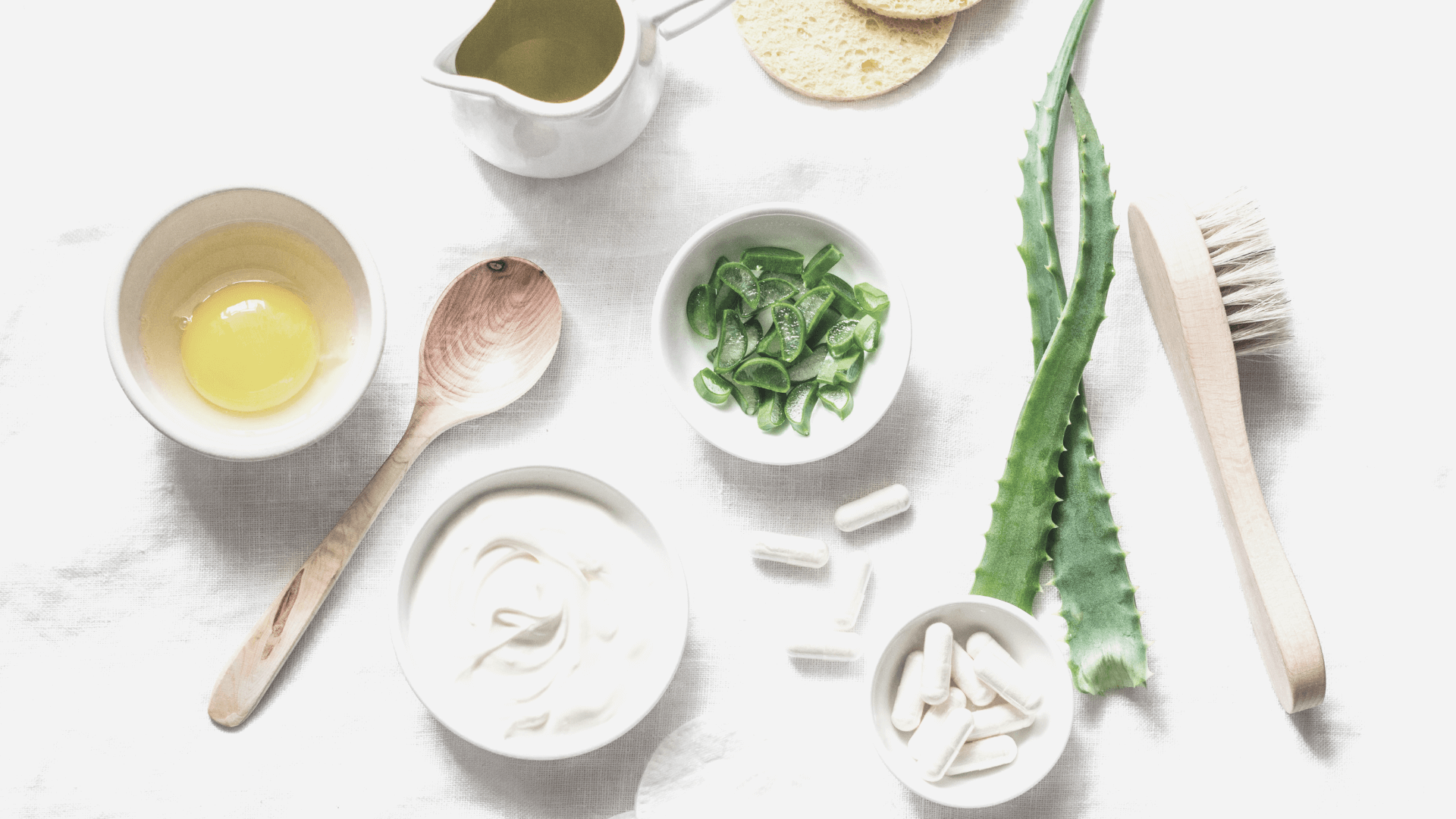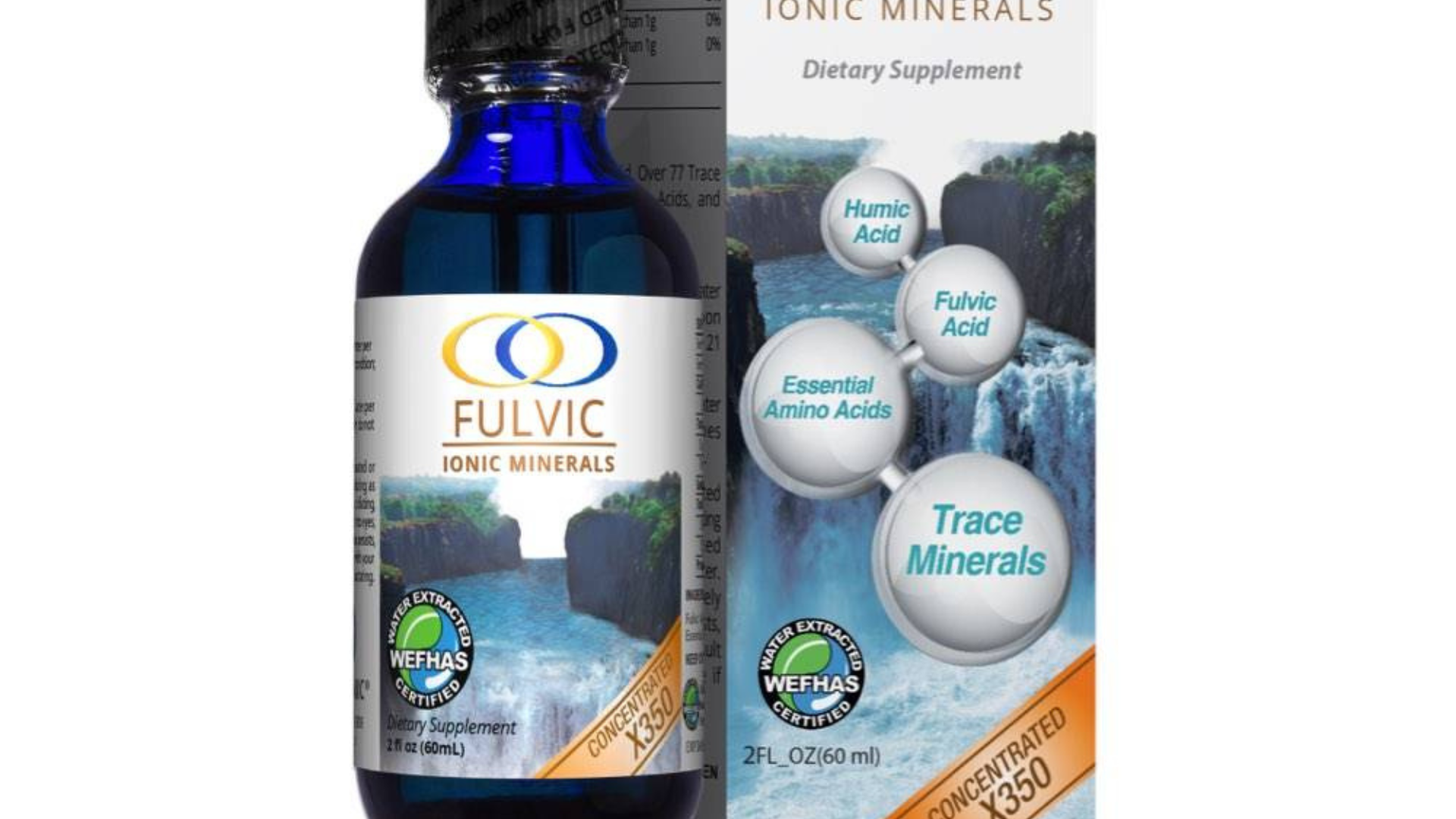Wondering about the differences between celery juice vs celery smoothie? Do you want to learn how to make celery juice, but you don’t have a juicer? You’re at the right place today.
The current challenge is around hydration.
When I wrote the hydration article, I stated,
But I have never tried celery juice, so I think it’s time. Full disclosure, I did not go out and buy a juicer. So, I’ll be making celery juice in a more complex way with a blender only. And I’m going to share my how to at the beginning of April, too, in case you want to try it out.
Well, it’s no longer the beginning of the month, but I am here to report and share on celery juice and how I’m doing it with my blender.
Alright, now there are a few parts to this post because to this day I’m skeptical of the popular health trend >> the celery juice craze. And by the way, I think that no matter what type of craze it is, we should all enter in skeptical.
The reason? Health trends are constantly coming and going. And if we’re constantly coming and going with them, it’s hard to form a routine and get a good understanding around what works for us as individuals.
So to begin, before we even get into the nitty gritty regarding celery juice vs celery smoothie, let’s chat about celery in general.

What is Celery?
Celery is a plant which belongs to the parsley family.
Raw celery boasts the following nutritional facts for 1 cup, chopped:
- 14 calories
- 3g carbs
- 1.6g fiber
- 1.4g sugar
Additionally, it contains minerals such as calcium, magnesium, iron, zinc, and potassium. It also contains vitamin C, A, vitamin K, E, and B vitamins (thiamin, riboflavin, folic acid, vitamin, and vitamin B6).
Celery Leaves
Most people make waste products out of the celery leaves, but when making juice, I do not.
First, they are edible, despite primarily being used as garnish.
Also, the leaves contain vitamins, minerals, and fiber.
Especially when juicing, there really isn’t a need to remove them.
In fact, by removing the celery leaves, you’re just adding time to the process.
Cut off the butts of the whole celery stalk, and proceed forward, using the rest of the celery bits and pieces.
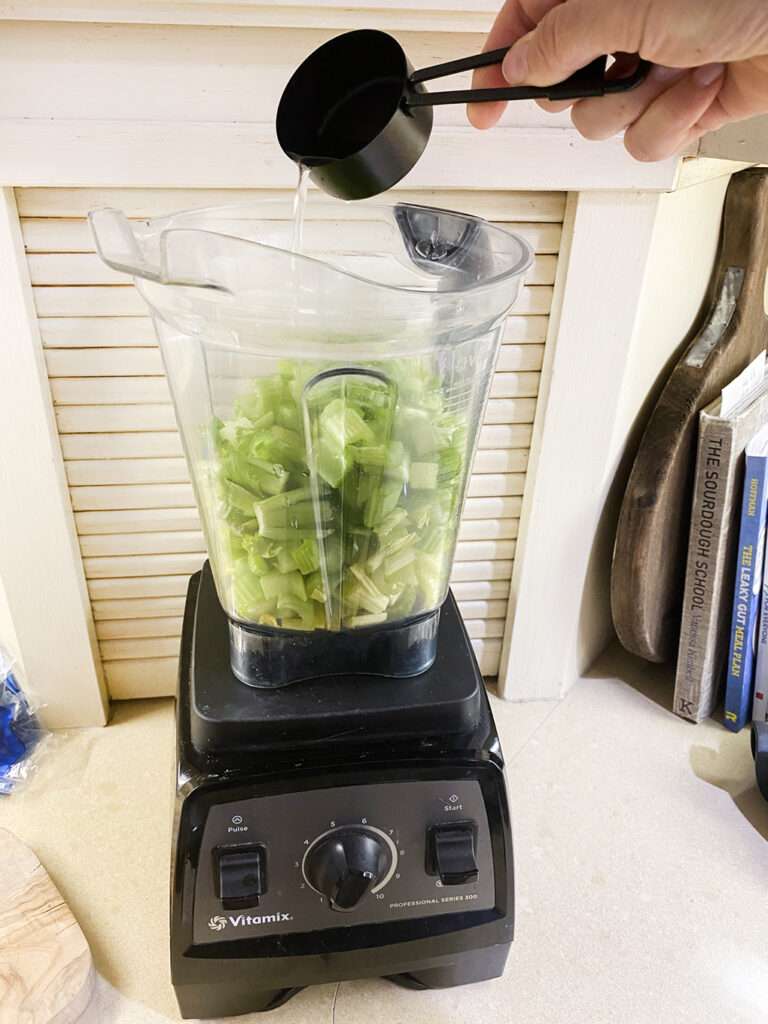
Celery Stalks
The stalks of celery are the long, main piece of celery.
They provide the bulk of water for hydration, along with the bulk of everything else. Without the stalk, you cannot make fresh celery juice because there will be almost nothing to juice.
Sources: HERE, HERE, and HERE.
Celery Juice Promise
Okay, now let’s break this down even further.
There is a hefty celery juice promise out there by the Medical Medium, aka Anthony William.
In fact, it’s not just a promise but an entire movement – The Celery Juice Movement.
Within this movement, people prescribe to the theory that, “a glass of celery juice is saving lives as it restores people’s health one symptom at a time.”
Here is the claim:
People are healing from all kinds of acute and chronic illnesses, including Hashimoto’s thyroiditis, eczema, psoriasis, acne, SIBO, constipation, chronic fatigue syndrome, blood sugar issues, migraines, acid reflux, high blood pressure, addictions, adrenal issues, gout, allergies, autoimmune conditions, and countless others, from drinking plain celery juice daily.
While I do not prescribe to the theory that any one, single thing heals all those issues (or any issue for that matter), I’m not going to definitively say it achieves good health and/or hurts one’s condition.
Experimenting with celery juicing was for overall hydration because I no longer deal with any of those issues above.
And in this regard, I think celery juice can absolutely have its place as part of a healthy diet.
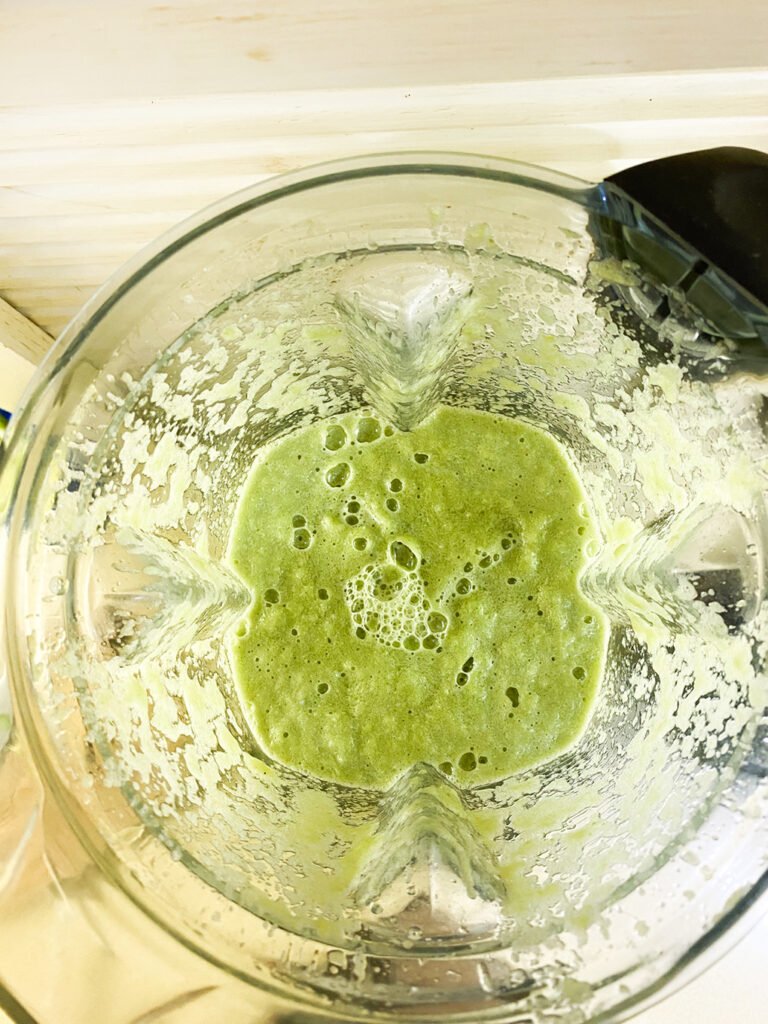
Celery Juice vs Celery Smoothie (+ how to make them)
Click HERE to save this article on the celery juice vs celery smoothie for later.
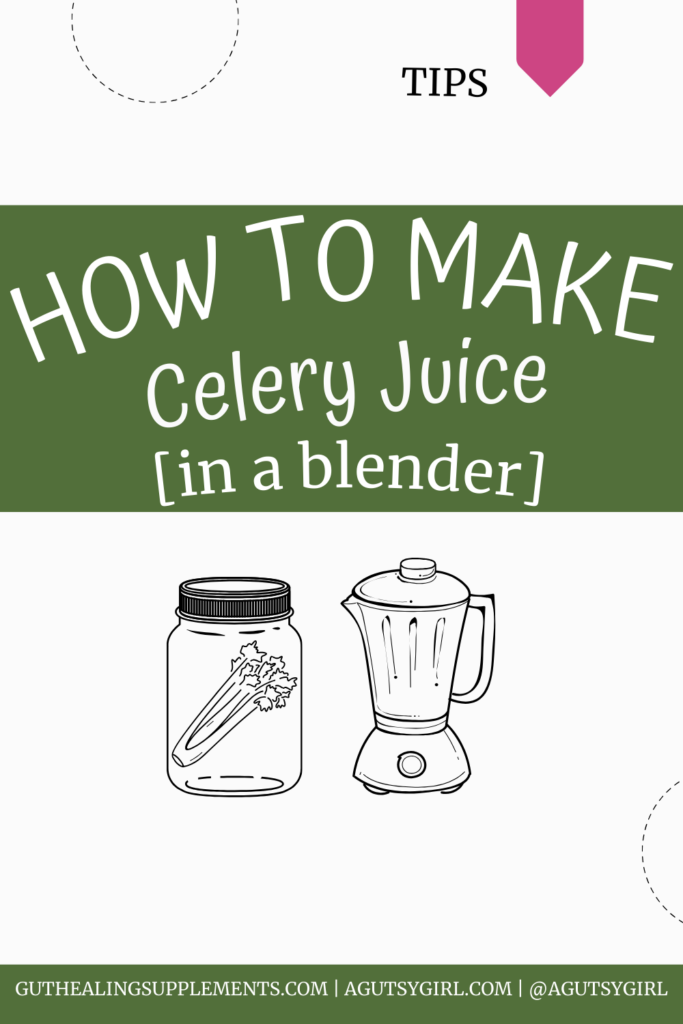
Below you will find the exact recipe I use for making celery juice in a blender.
And the cool thing about this process is that you can get either/both the celery juice or smoothie by doing it.
That’s because my process uses a blender vs juicer.
Now you may be wondering, what is the actual difference between a juice and just a plain smoothie?
Juices take out a lot of the fibrous components of fruits and vegetables, while smoothies leave them in.
This makes juices less filling but a whole lot easier on your gut.
Fiber is tough for the human body to break down, so removing that part alleviates some of the process.
Especially for those with Gutsy issues, fiber can be very taxing on the body. This can lead to some uncomfortable symptoms such as abdominal pain, gas, and bloating.
So, while juice may be slightly less filling and nutrient-dense, it is a lot easier to digest. It gives you the nutrients you need without sacrificing good digestion.
Source: HERE
If you need more on fiber, read about the differences between soluble fiber and insoluble fiber.
Juicing
The most effective and quickest way to do the juicing process at home is by way of a juicer.
There are so many out there, and truth be told, I have not used that many of them. Obviously – because they are expensive and I don’t need 17 different juicers nor do I desire to spend all that extra money to keep on the latest trends.
In fact, currently I don’t own a single juicer. (After researching and writing this post, though, I want one again.)
However, I have purchased and used some in the past and I have done my research into the best options.
Smoothies
With smoothies, though, whatever you put into the blender, you’ll ultimately consume; every single piece and part.
You will be getting everything without any food waste.
This has multiple benefits for digestive health, BUT if you have irritable bowel syndrome or inflammatory bowel disease, consuming everything might not be the best way for you right now.
My Celery Juice Experience
I am not about to knock anything I haven’t tried. So while I enjoy celery, I do not love it so much that I just couldn’t wait to try juicing it….even if it is a hot wellness trend all over social media.
So doing this experiment has been a long time coming.
But once I started making, and consuming, celery juice, I actually began enjoying it.
As a bonus, doing it via the Vitamix I already owned vs. purchasing a juicer, worked like a charm.
So here’s how I did it.
How to Make Celery Juice [in a blender]
You need just five items:
- organic celery (choose organic because the environmental working group has celery on the Dirty Dozen list)
- blender
- cheesecloth / nut milk bag
- bowl or glass to strain into
- mason jars
Organic Celery
Is it important to use organic celery? Yes, yes it actually is.
Celery is the only ingredient in this juice. Furthermore, celery is on the dirty dozen food list.
If you are juicing for optimal health, choose the very best celery you can find.
You know what? It’s not easy to find organic celery where I live. We have a couple options; the local market (which is still 15 minutes from here) and then organic celery from Josie’s (found at big box).
The first few rounds of celery juice, I used Josie’s Organics.
1 bag / bunch of celery of Josie’s (1 pound) = about 2 x 6-8 oz cup of celery juice (that I put in my mason jars).
Vitamix Blender
Note again: I did not say Vitamix juicer.
We have a Vitamix blender. You’ll find several Vitamix blenders HERE.
Remember, again – You can skip a lot of these processes if you have a juicer.
But also remember that you do not need to have a juicer in order to consume this popular drink.
You already likely have a blender, so just use what you have to see if you enjoy this prior to getting a juicer.
Nut Milk Bag
Some call it a nut milk bag; others call it a cheesecloth. And guess what? They actually aren’t even the same things.
Typically, the nut milk bag is thicker. The one I have is a kraft-colored brown.
The cheesecloth is thinner, and usually has wider holes in it. And by wider I mean just a smidge wider.
You can likely use either for this recipe, but full disclosure, I use my cheesecloth and it works perfectly.
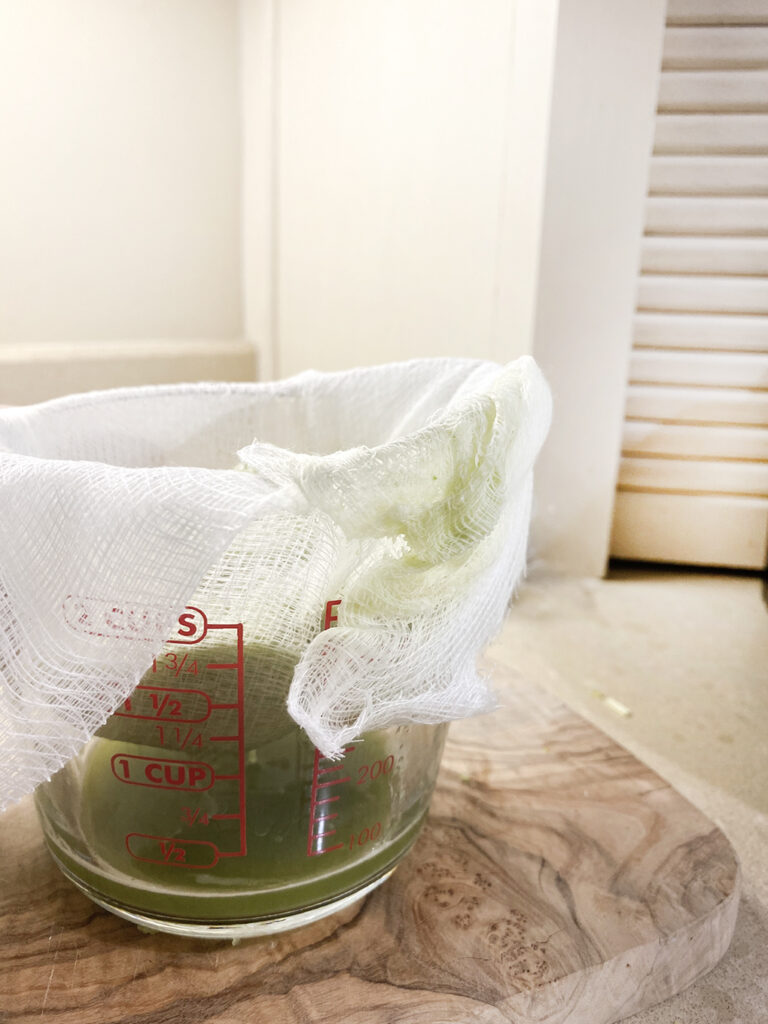
Bowl or Glass for Straining
For best results, you’ll need something to place your cheesecloth over in order to strain the pulp from the juice.
Because I only make 1 bag of celery at a time, I find that using Purex Glass Measuring Cup is easiest.
This way, I can easily strain, then use the pouring spout to pour the juice into my mason jars.
Mason Jars
If you aren’t going to drink the celery juice immediately, consider using small mason jars to keep for later.
You don’t need anything fancy (but if you want fancy, Weck is the answer!)
Celery Juice in a Vitamix Blender Process
Click HERE to save this process for later.
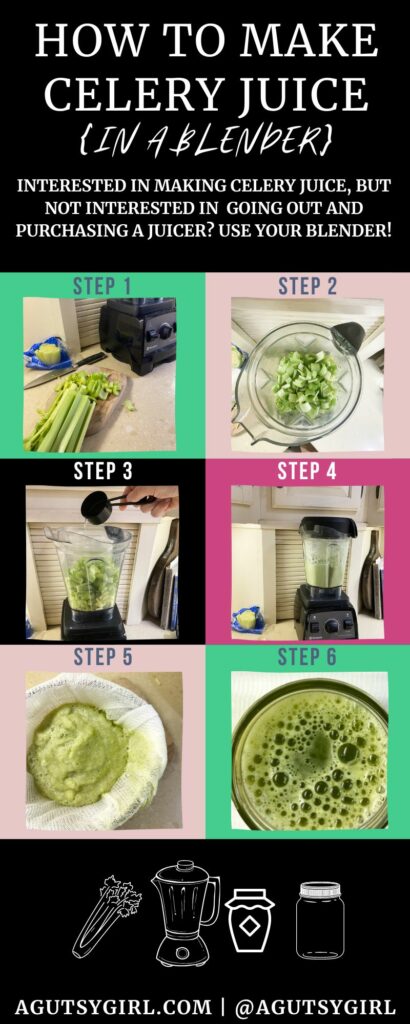
Here are the exact steps I take to make my celery juice in a Vitamix blender.
- Take out the celery. Chop off the celery butt. And yes, I only cut off the butt. I use everything else.
- Chop the celery into small pieces.
- Place celery pieces into the Vitamix, or blender of choice.
- Add in 1/2 cup water. I do this so it’s easier to blend and infuses just a little more hydration.
- Blend the celery until it’s fully ready to juice. You want it to be as pureed as possible because that’s how you extract the most juice in the most efficient way possible.
- Place your cheese cloth over a bowl or glass jar, making sure there is enough cheese cloth overlap (because you’ll need to fold it up and squeeze at the end).
- Pour the celery mixture onto the cheese cloth. Let the celery mixture separate the juice into your jar.
- Gather the ends of your cheese cloth, and gently squeeze off the excess juice.
- Pour the juice into mason jars, and enjoy (or set in the fridge to save for later).
Notes
- Again, if you’re going to do this, you might as well do it the best you can. Because of this, I only make 1 package of celery at a time.
- This makes 2 cups of pure celery juice for 2 days so it’s super fresh.
- The total time this took me from start to finish was about 7 minutes. It’s a lot easier than you think it’s going to be.
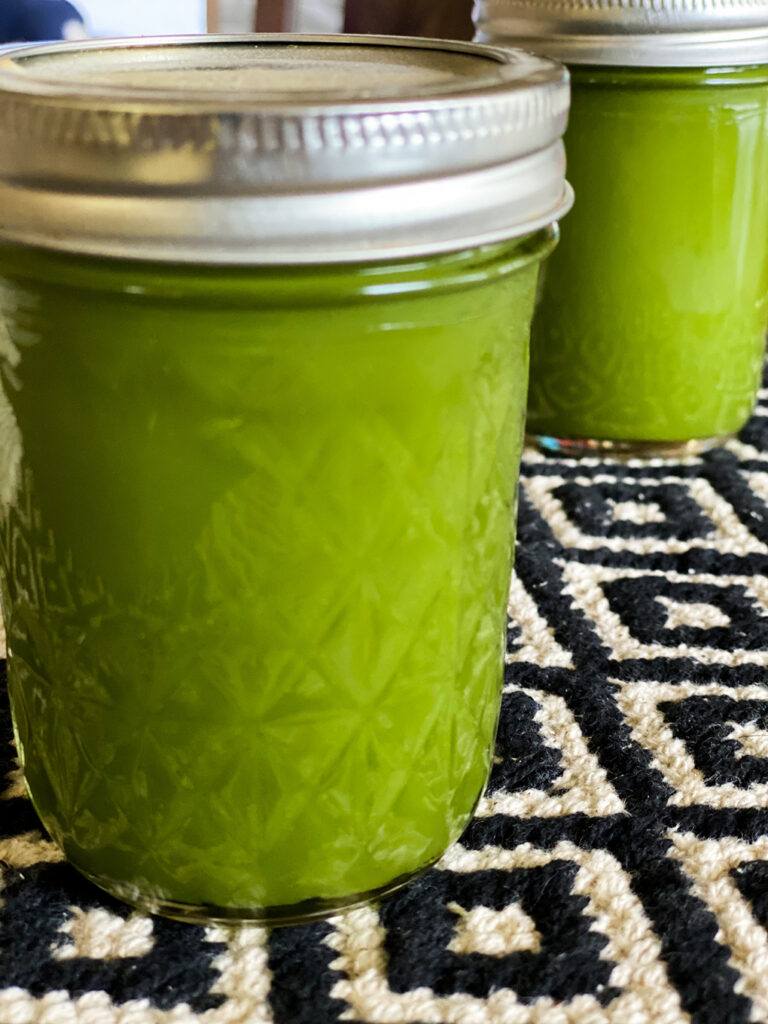
Overall Experience with Juicing Celery
Here are the things I’m loving about celery juice:
- I actually enjoy it. But I won’t lie; for me, it was definitely acquired. I did not love it the first few times, but then it sort of began quenching my thirst.
- More hydration, as celery contains high water content! And wasn’t this the goal all along?
- From a juice recipes standpoint, I like that it’s super simple; just whole celery sticks are all you need.
The verdict is still out:
- I cannot tell you if it helps the digestive system or with acne, weight loss, or anything else for that matter because because prior to drinking the juice, I was feeling fantastic.
- I might enjoy celery juice even more if I add other whole foods to it: apple, ginger, lemon, and/or some plant-based milk at the end to make it creamier.
Regardless of how I’m currently feeling, it would be fun to do a “I drank celery juice every day for 30 days and this is what happened.”
You can do it, too. Just record in your gut healing journal and report back. HERE is the PDF version that you can download today.
Otherwise, I’m happy to ship you the full, spiral-bound journal to your doorsteps.
So I’d love to hear your thoughts on juicing celery. Do you do it? What has your experience been like? Do you have a juicer, or would you be up for trying it this way with the blender you already own?
If you liked this post, you might also enjoy:
Xox,
SKH
🤰 bloating be gone! weight loss through optimal gut health for women
💃ʜᴇᴀʟ ʏᴏᴜʀ ɢᴜᴛ. ʜᴇᴀʟ ʏᴏᴜʀ ʟɪfe.
🫶🏻 founder gutbyome.com


